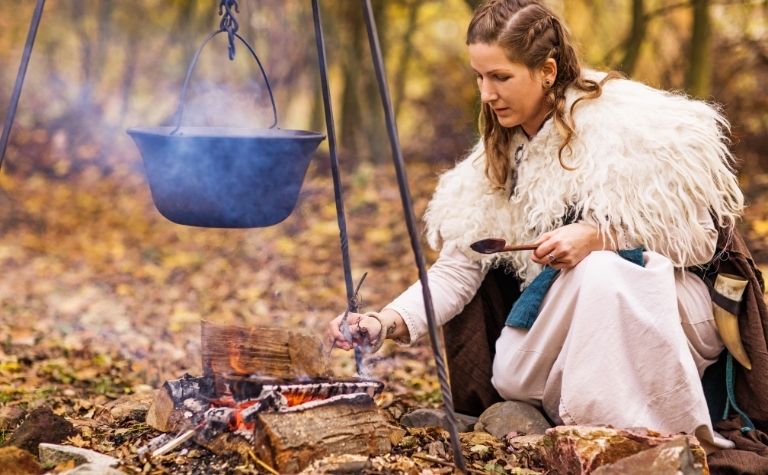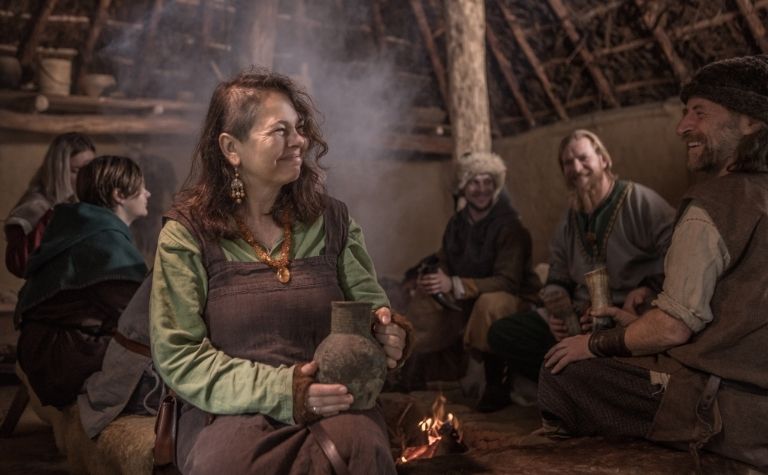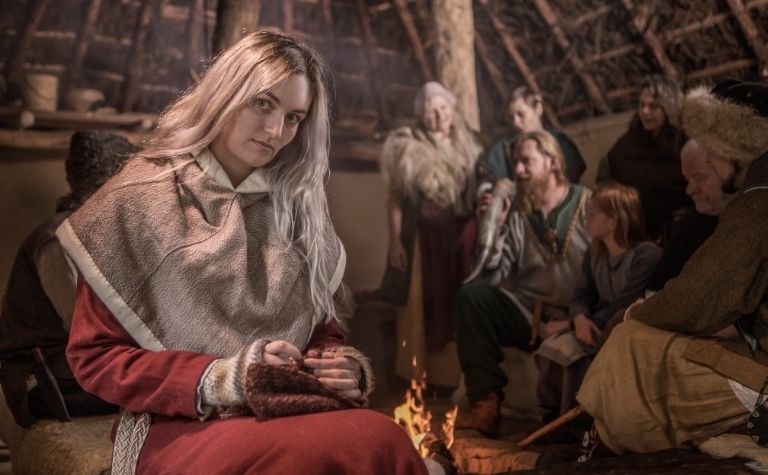The Vikings have a reputation as some of the fiercest warriors in history, and accounts of their terrible exploits are plentiful.
A less well-known aspect of Norse culture is their relatively egalitarian gender relations.
Their laws and social customs were a key influence on how the Vikings treated their wives.
Vikings treated their wives exceptionally well by the standards of their day. Norse women had significant clout within their households and marriages.
They also participated in limited aspects of public life, including business, religion, and establishing Viking colonies overseas.
The rest of this article will take a deeper look at Viking gender relations and explain practices surrounding marriages in Norse culture.
Also see Did the Vikings Share Their Wives? to learn more.

Were Viking Marriages Egalitarian?
Viking marriages were relatively egalitarian for their time. While their society was still male-dominated, women had significant protections under the law.
Norse wives had a say in the choice of their mates, could initiate divorce proceedings, reclaim dowries, and play a part in public life.
Like most European peoples of their time, Norse society too was male-dominated.
The most prominent roles in public life were reserved exclusively for Norsemen, and Norse women had limited roles to play in these spaces.
It was the Norse men who were leaders, chieftains, and lords.
Moreover, technically speaking, Norse women cannot even be called Vikings.
The Norse word for Viking, Vikingar, which means pirate, referred to only Norse men.
Until recently, scholars assumed that Vikings were exclusively male and that Norse women did not accompany their men on voyages.
However, scholars now argue that Norse women did play significant roles in the public sphere of Norse society. [1]
They believe that Norse women accompanied the Vikings on their voyages and also played an important role in setting up Viking settlements in places as far away as England and America.
Norse women were also entrepreneurs who ran their own businesses and seeresses who were respected for their prophetic powers.
Lavishly furnished burial chambers and runic inscriptions provide rich archeological evidence of the status enjoyed by the most powerful Norse women.
And episodes from the Icelandic sagas portray them as strong characters and active participants in Norse society.
All of the evidence suggests that the early medieval Norse society fostered significantly more egalitarian gender relations than in other parts of Europe at the time.
However, despite the advantages Norse women enjoyed compared to their contemporaries in Europe, for the most part, they were restricted to the domestic sphere.
Within these limitations, though, Norse women had significant rights under the law.
They had a say in the mate their family chose for them and could even initiate divorce proceedings if they were unsatisfied with their marriage.
Norse laws had some of the earliest legal provisions for divorce. These governed not just the dissolution of a marriage but also the handling of assets and provisions for children.
Under the law, a Viking had to provide for his wife’s offspring for the duration of his life.
As Norse women had significant property rights, a Norse woman could also make her husband return the dowry that her family paid her husband on marriage if the marriage was annulled.
Thus, Norse women could not be kept trapped in a marriage, and a Viking would have had to treat his wife well to maintain the legal status of their relationship.
Interestingly, such rights were also extended to mistresses of Viking men, unless they were slaves.
The protection offered to mistresses is vital because the pagan Norse religion did not prohibit polygyny.
Because of this, high-ranking Vikings often had multiple mistresses, apart from their wives.
Thus, under their laws, a Norse man had important obligations to all of his sexual partners.
Also see Why Did the Vikings Die Out? to learn more.

Did Vikings Share Their Wives?
There is no evidence Vikings shared their wives.
On the contrary, high-ranking Norsemen often had multiple mistresses apart from their wives, while low-ranking Norsemen struggled to get a mate.
The pagan religion of the Norse permitted polygyny, allowing a Viking to take multiple wives. [2]
However, because Norse laws offered significant material protections to women, both in marriage and in relationships as mistresses, only the richest Norse men could afford to keep multiple wives and mistresses.
In effect, the protections offered to women under Norse law and custom ended up in a situation where rich Viking men had multiple sexual partners while lower-ranking Vikings found it hard to find mates.
Some scholars have speculated that this was one of the factors that pushed Norse men into participating in Viking raids. [3]
The lack of sufficient mates for low-ranking Viking men may also have contributed to the idea that Vikings shared their wives. However, there is no evidence that this was the case.
The suggestion that the Vikings shared wives probably tells us more about later chroniclers than it does about the Vikings themselves.
The idea may derive from the Victorian morality of some of these writers, who were fascinated with the starkly different codes of Norse society compared to their own ancestors’ beliefs.
Also see Were the Vikings Celtic? to learn more.

Did Vikings Practice Polygamy?
Vikings did not practice polygamy. While Norse laws did permit polygyny, in practice, most Norse men only had one wife.
A Viking had to provide for all his wives, mistresses, and their families under the law and could not keep one by force.
While Norse laws did not outlaw polygamy, the patriarchal nature of their society meant that multiple partners were mostly available only to Norse men.
But, even though Norse men were permitted to practice polygyny, in practice, most maintained only one wife.
As Norse law offered significant protections to wives, even permitting them to initiate divorce proceedings, a woman could not be kept in marriage against her will.
Upon divorce, a Viking would have to return the dowry paid by his wife’s family and continue to pay for the upkeep of her children.
Thus, it was difficult for a Norseman to maintain multiple wives.
While high-ranking Norse men did keep multiple mistresses, even these women had rights under Norse law and could not be kept by force unless they were slaves.
Conclusion
Norse laws and customs and archeological and textual evidence suggest that Vikings treated their wives exceptionally well by the standards of their time.
Also see Were the Vikings Before the Romans? to learn more.
